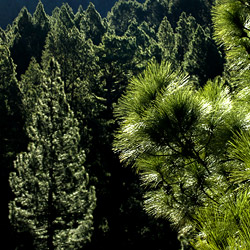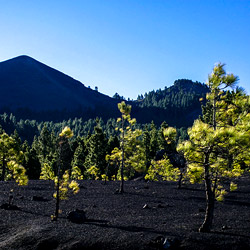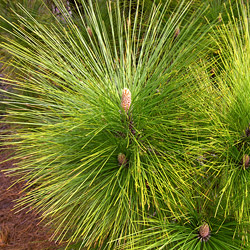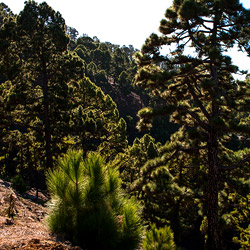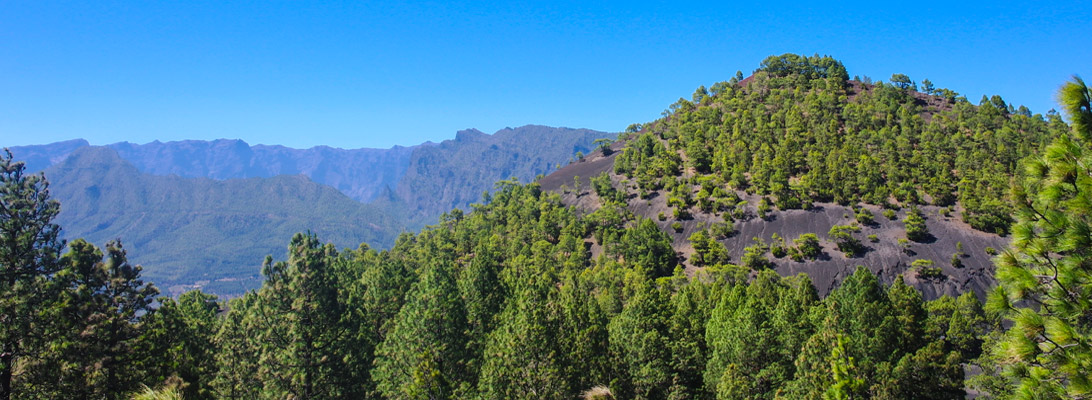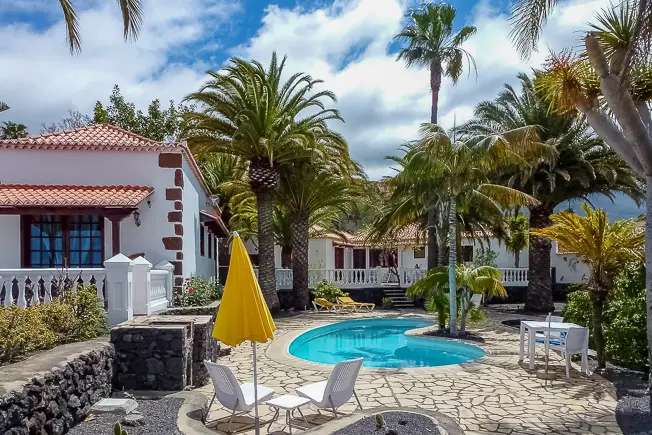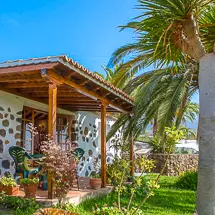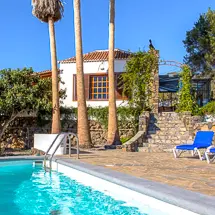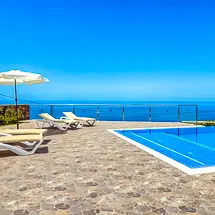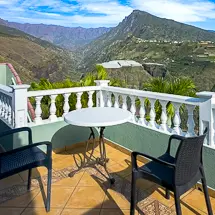The Canary pine can survives volcanic fires as well as forest fires due to its thick bark. Often it germinates again quickly after a fire. Littles signs of a fire fire remain on the pines after only a few years. Millions of years in volcanic surroundings and growing directly on volcanic slopes have optimally adapted the Canary pines to their surroundings.
Canarian pines "milk" the trade wind clouds
A further characteristic benefits the Canary pine in the high altitudes (on La Palma about 1,500 to 2,000 meters): its fine needles, up to 30 cm long, with which it combs through the moist trade wind clouds and condenses them drop by drop into water. Almost one third of La Palma is covered by pine forests. Canary pines offer hikers pleasant shade and an unparalleled fresh scent, especially in the caldera, on the cumbres and in the south of La Palma (Los Canarios). But beware, the carpets of dry pine needles at the foot of the pine forests can also become very slippery for hikers!
Pine wood used to be used for ship planks, furniture, coffered ceilings and wine barrels. The heartwood (tea) is extremely resinous. Therefore, wines matured in tea barrels, take on a resinous taste.
About a third of La Palma is covered by pine forests. Canary pine trees offer hikers shade and a wonderful fragrance. The layers of dry pine needles on the bottom of the pine forests are very slippery. The Canary pine with its fine long pine needles, catches the water from the trade wind clouds and lets it drip to the ground. In this respect, a pine forest is a source of water for a Canary Island and a necessity for life, because without such vegetation a diverse flora on the Canary Islands would hardly be possible.







